When you start an online business, there’s a lot to think about. Coming up with a winning online business idea, conducting market research, creating your own website, sourcing and marketing your products — the list seems endless.
But we have your back! In this post, we’ll break down all of the steps to start an online business and provide some tips on how to be successful.
Why start an online business
↑ Back to topStarting an online business is a great way to expand an existing brick-and-mortar business, experiment with new products, test a business idea, or supplement existing income. It can be a powerful opportunity for those looking to dive into entrepreneurship — with lower startup costs, faster go-to-market times, and fewer moving pieces than traditional brick-and-mortar stores.
You don’t need to worry about finding the perfect storefront, hiring employees to manage that location, or, in some cases, even holding inventory.
An ecommerce business allows you to reach beyond your locale. You can sell online to your target audience across the country or even the world.
Doing business online is also a great way to connect with people where they already spend time. After all, an estimated 80% of American consumers shopped online in 2024, and ecommerce’s share of total retail sales is only projected to rise over the next several years.
How to start an online business
↑ Back to topThere are a number of ways to start an online business, and there isn’t one perfect path for every single company. So, use the list below as a general guide or resource for online business ideas, and adapt it to meet your specific needs.
1. Define your audience
Before you go any further, take the time to find your target audience — the people who are the best fit for your products or services. When you conduct this and other forms of market research, every other step you take throughout the entire life of your online business will improve as a result. This research will also help you identify your niche to improve future marketing efforts.
Understanding the people you want to serve will help you find the best online business to start, attract customers with more effective marketing, and increase your chances of long-term success.
Starting with a product in mind
If you already know the product or service you want to sell online, or have a great online business idea, think about what types of people would benefit most. Be as specific as possible!
For example, if you’re an artist who wants to sell pet portraits, your audience might be pet owners between the ages of 21 and 65, with disposable income. The people in your audience are also likely to be interested in the arts — visual or otherwise — as indicated by the accounts they follow online or past purchase behavior.

Starting with your audience first
If you don’t have a specific product or business idea in mind, start with something you care about. Are you passionate about small business owners? Do you love working with kids? Are you a car lover drawn to fellow vehicle enthusiasts?
Once you’ve chosen your target market, identify their problems or needs. Do they need clothes with a better, more comfortable fit? Are they searching for a solution to reduce stress? Are they looking for ways to connect with people who share their interests?
Information about their internal motivations can be even more helpful than dialing in on demographics (age, location, gender, etc.). Why? Because it helps you write content that speaks to them, craft successful marketing messages, and make your products as useful as possible to your target audience.
Here are some ways you can get to know your audience:
- Spend time where they spend time. Industry forums, social media groups, and subreddits are great places to start. Get involved in discussions and ask questions about what’s important to them.
- Learn more about them through surveys. Send out low-pressure survey requests using social selling and through email.
- Conduct in-person interviews. While it may be more time-consuming, sitting down with people in your target market is very, very powerful. Conversations allow them to go in new directions and provide additional information you never would have thought to ask for in a survey.
And remember to listen to what your target audience has to say! The better you understand their motivations, the better you can serve them.
2. Choose your products
Now that you have your business idea, the next step is to conduct some more online market research, discover the best products to sell online, and decide what, exactly, you want to sell. Here are just a few other online business ideas:
Handcrafted products
These are items you make yourself, like jewelry, clothing, paper goods, wooden decor, and food. This is a great option if you’re crafty, want full control over production, and are looking for lower startup costs. But bear in mind: it can be harder to capitalize on success — it’s more difficult to scale when you personally make each and every product.

Offerman Woodshop certainly has, though. They’re a collective of woodworkers, who sell beautiful, unique items, like furniture, cutting boards, and aprons.
Manufactured products
These are items created in-house or by a third party that are stored, sold, and shipped by you. Think dinnerware, shoes, makeup, electronics, or auto parts. This is a great option if you can’t physically produce a product yourself or if you want to scale, but it does involve higher startup costs since you’ll have to acquire inventory up front.

Seymour Duncan, for example, manufactures guitar gear, like pedals, amps, and pickups.
Digital products
These are items that are delivered online without a physical format, like an ebook, online course, music file, design template, or workout video. Digital products are scalable and typically have low startup costs and minimal ongoing production costs.

Toontrack, for instance, sells downloadable sounds and digital products for musicians and music engineers.
Dropshipping products
These are items that are manufactured, stored, and shipped by a third party, like t-shirts, stickers, and phone cases. This option takes away the hassle of storing inventory and shipping products, but also removes a lot of control and often has tighter margins. Learn more about the pros and cons of dropshipping.
Services
These are tasks that are performed for clients without any physical component. Examples include coaching, consulting, graphic design, event planning, and interior design. You can perform these services online or in person.
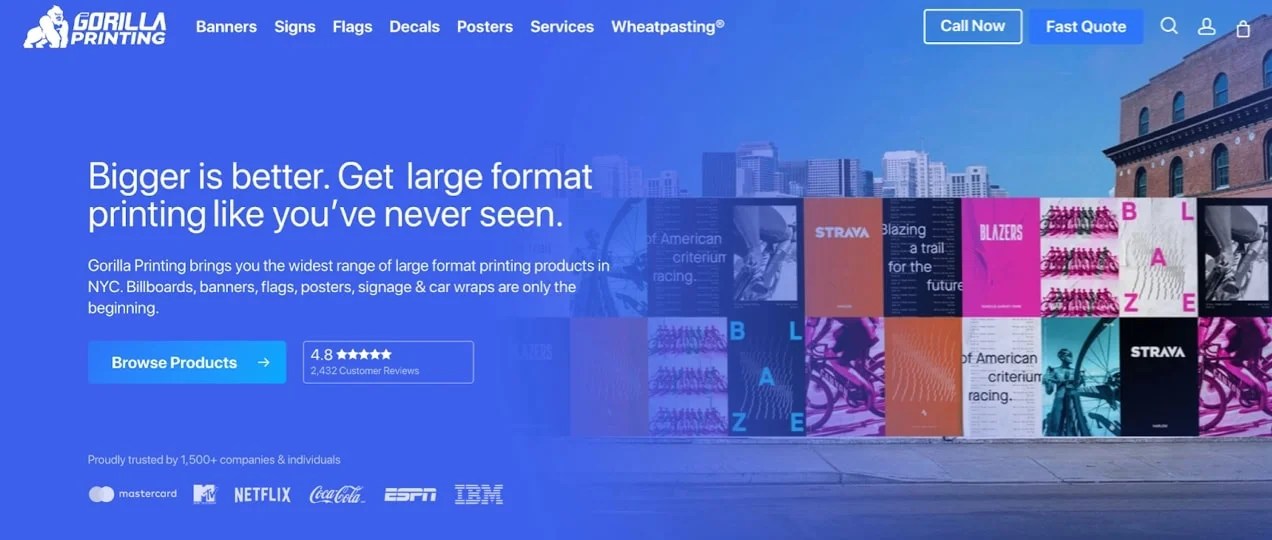
Gorilla Printing is a great example of a service-based business, selling printing services directly from their own online store. Clients can choose a printing format, — sign, flag, banner, etc. — add their information, upload their design, and pay for the service all in the same place. See why service-based businesses should sell online.
Memberships
These are the perfect fit for an online business model. You can sell either one-time or recurring, exclusive access to any number of things — a library of workout videos, an online course marketplace, stock photo galleries, template collections, and forums. This is an excellent way to build a community around your brand and generate revenue you can rely upon.
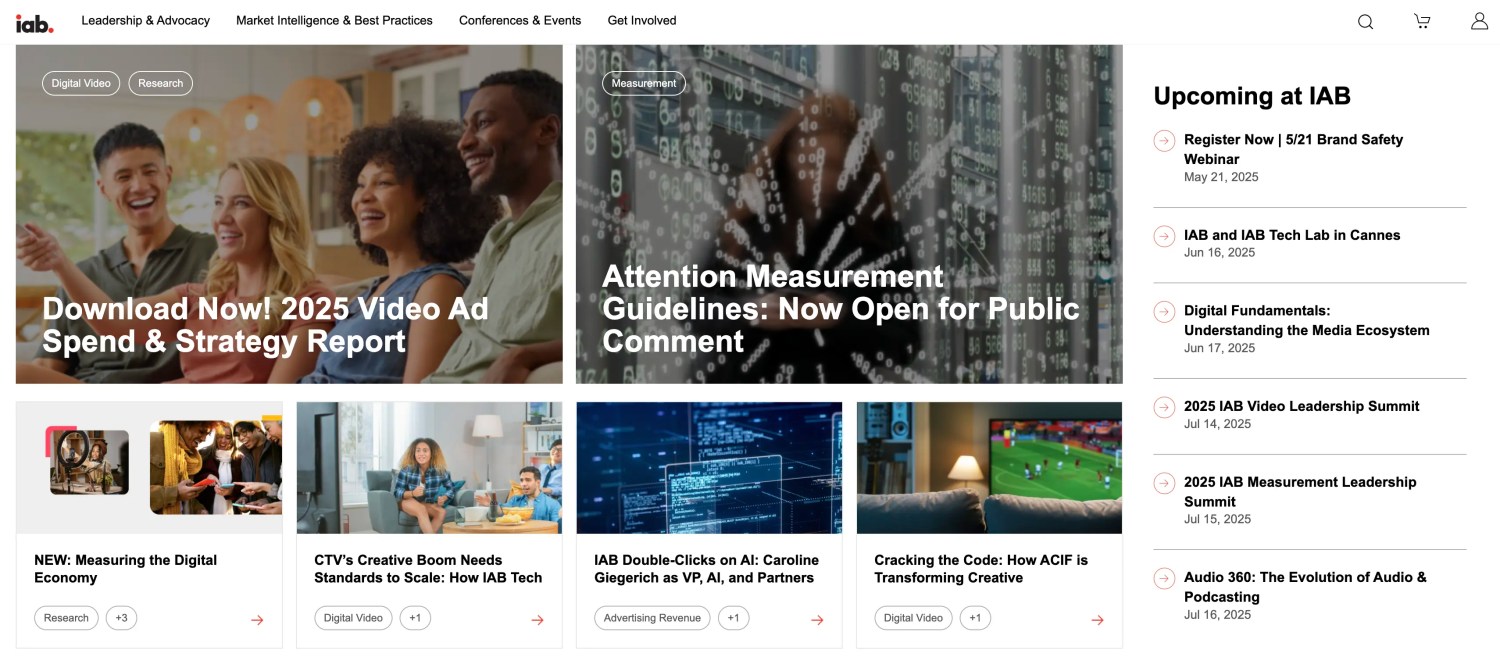
IAB, for example, offers a membership program with benefits for advertising companies, like professional development courses, industry resource guides, and networking event invitations.
Paid newsletter subscriptions
Charge people for access to your email marketing newsletter, filled with high-quality, excellent content that interests them. This is, again, a great opportunity to generate passive income. Learn more about how paid newsletter subscriptions work.
Bookings and reservations
Allow customers to reserve appointments, accommodations, and other types of bookings directly on your ecommerce site. This is a great option for a range of online business offerings, from services and excursions, to consultations and hotel stays.
Online courses
If you’re an expert on a specific topic, online courses are an excellent way to earn relatively passive income. You can create in-depth content with videos, downloads, quizzes, and more. Then, students can complete your course at their own pace, and even earn certifications.
Keep in mind that your online business doesn’t have to choose one of these five options — some of the most successful stores break the mold.
Or you might combine multiple types of products. You could produce and sell original paintings and dropship posters that feature your designs. Or, like One Stop Map, sell digital products (vector maps) while selling services (custom map design). The sky’s the limit!
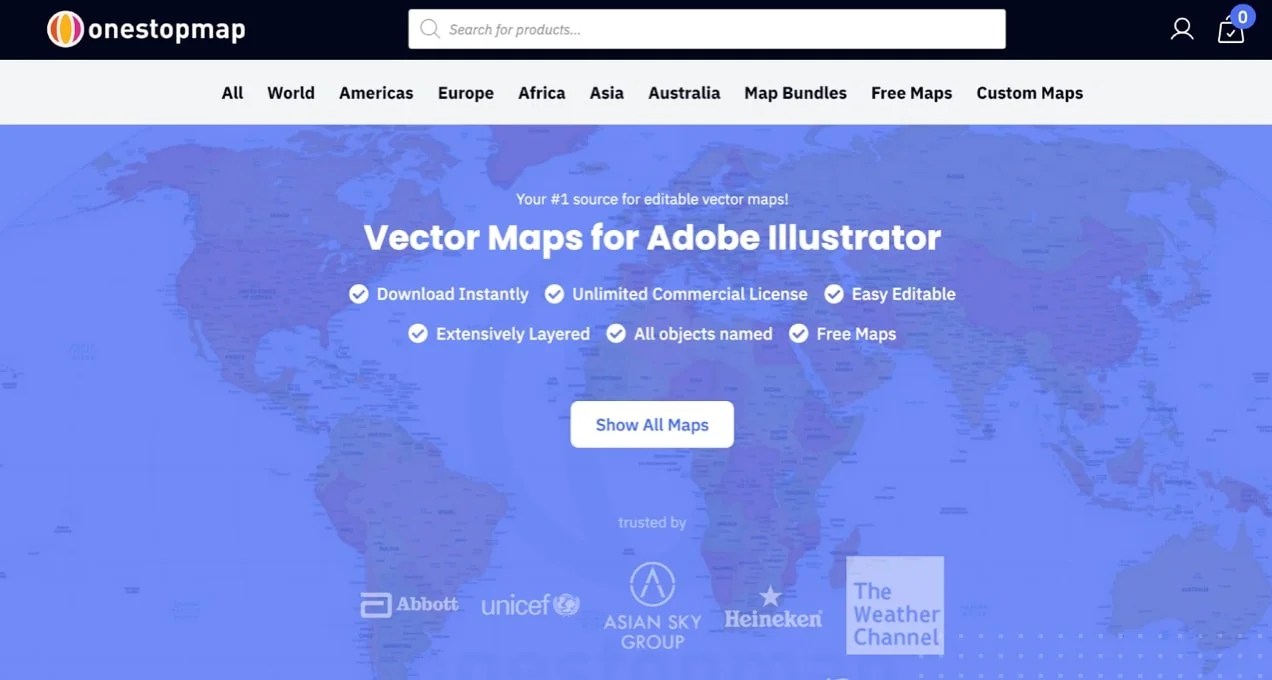
No matter what product or service you decide to offer, test your product viability before launching your business. This minimizes your risk, helps you align with the values of your target audience, and enables you to create the best possible version of your product.
There are a couple of different ways you can do this. Of course, you can, quite literally, pre-sell your items by offering pre-orders. Present your online business idea on your website or through a crowdfunding platform and charge in advance. This gives you a clear idea of interest and is a way for you to generate feedback.
Or you can simply sell the idea of your product or service. Talk to the people you identified as your target audience. Ask them if they’re interested in what you have to offer, if it meets their needs, how much they might pay for it, and how you can improve.
After generating viable feedback, apply that to your products and services to the extent that makes sense for your own online business.
3. Create your business
Once you’ve decided on a product, it’s time to set up your online business.
Take all necessary legal steps
Legal requirements vary based on your own business and where it’s located, but here are a few steps to consider:
Choose your business structure and register your business
Your business structure impacts everything from your legal responsibility and taxes to day-to-day operations. It’s an important part of starting a successful online business. There are a variety of business types you can choose from in the U.S., including:
- Sole proprietorship. An unincorporated business with a single owner. A sole proprietorship is the easiest and fastest way to start an online business. However, there are fewer legal protections with a sole proprietorship than most of the other options here, and greater personal liability.
- Partnership. A business with multiple owners, who contribute money, labor, skills, etc. and share the profits earned. This is another relatively simple form of company to start, but does have limited legal protections for the partners.
- Limited liability company (LLC). A limited liability company (LLC) is still quite flexible, and can be made up of a single owner or partners. But it offers more legal benefits and protection for the owners.
- Corporation. A corporation legally separates the business from its owners, offering the highest form of protection. Those small business owners become employees of the company. However, it also involves a lot more paperwork and management tasks, along with fees that must be paid consistently.
Take the time to fully understand the implications of each business type, and remember that each country varies when it comes to options. Don’t be afraid to seek professional help.
Get tax IDs and understand the tax framework
Typically, the structure you choose impacts how you pay taxes. You’ll also need to consider whether or not you’re legally required to charge sales tax, and how to set this up. This is based on factors like your location, where you’re shipping products, and what items you’re selling — it varies widely from business to business.
It’s best to work with a tax professional, especially when you’re first starting your online business, to ensure that everything’s set up properly.
We’ll discuss building your online business more in-depth in a bit, but there are excellent tools available to automatically calculate sales tax, which will take a lot of the complication out of the process.
Obtain any necessary licenses
Some areas require online businesses to get licenses to sell regulated products like firearms, alcohol, or CBD. Again, the business license you may need varies based on your location and the items you’re selling.
If your business is located in the United States, this guide from the Small Business Administration walks you through everything you need to know.
Open a business bank account
When starting an online business, it might seem easy to just use an existing bank account. But there are plenty of good reasons to separate your business and personal accounts, including:
- Professionalism. Business partners and clients can write checks to your business name, not to you personally.
- Protection. Separating accounts helps protect your personal assets from business ones.
- Simplicity. Separated accounts make accounting and taxes much easier to manage.
- Extra benefits. A separate business account allows you to set up a credit card, build a credit history for your company, and apply for loans and lines of credit.
When choosing a bank account, pay attention to interest rates, transaction fees, and minimum account balances. You may also want to talk to another small business owner and see what they love about their bank.
Set up accounting
Set up your books correctly at the beginning to save time and hassle down the road. Get to know the basics of small business accounting, and consider hiring an accountant to handle your finances as your company grows. A dedicated accountant may even be able to help refine your business model for better cash flow and profitability.
Decide how you’ll charge for products
Before building your business website, determine your pricing strategy. How do you want to structure payments? Here are a few options:
- One-time payments. Charge for your products in full at the time of purchase.
- Subscriptions. Generate recurring revenue by charging on a monthly or yearly basis.
- Payment plans. Allow customers to pay for their purchases over time.
You may also want to offer some combination of these. For example, you might offer one-off bags of cat treats, while also allowing customers to subscribe and receive a bag every month. For bigger-ticket items, you might have the option of a payment plan in addition to paying in full up front.

When pricing your items, consider how much it costs you to create each one. This includes more than just the cost of materials and manufacturing. Think about marketing expenses, licenses, permits, warehouse fees, and labor. Of course, not all of these will apply to all online businesses — this is completely unique to you!
What is your target audience willing to pay for your products? What value does it bring to their lives? How does it help them? Learn more strategies for pricing products.
4. Build a store
With solid business practices in place, it’s time to build your online business.
Start with your website foundation
Purchase a domain name and hosting
Your first step is buying a domain name — the URL that customers type into their browser to reach your website. Pick something that represents your online business, is based on your business name if possible, is easy to remember, and doesn’t contain numbers or hard-to-spell words. Here’s a guide that walks you through other important considerations.
Your host is where your business website lives — it stores all of your website files and displays them to visitors around the world. Your host has a big impact on your website’s security and speed, along with how your site functions as a whole. Here are some things to look for in a host:
- The opportunity to scale. While you might not need lots of storage or bandwidth when you’re starting your online business, it’s important that you can grow without having to migrate to a new host. Choose a provider with multiple plans, including VPS and dedicated options.
- A price that fits your budget. Remember that a high-quality host is going to cost more than a lower-quality one. This goes back to the old adage, “You get what you pay for.” But when you’re just starting out, you also want to avoid high overhead costs until you’re generating regular income. Think through what you can afford and what features are important to you.
- Excellent support. If you run into any problems, you’ll want a support team ready to help. Choose a host with great support via the methods that you prefer (email, live chat, phone, etc.).
- Easy WordPress integration. Many hosting providers offer one-click WordPress installations. Some even go one step further, with servers optimized specifically for WordPress, and include premium plugins like Jetpack.
- Security measures. Your site security starts with your host. Look for features like SSL certificates, firewalls, malware scans, and updated software.
- Speed tools. A fast site is important for search engine rankings and user experience and, again, this starts with your host. Speed tools include things like a built-in CDN, caching, and fast servers.
- Support for the software you use. If you opt to build with WooCommerce (recommended), take notes of each host’s WordPress-specific plans and their support for the WordPress community in general.
If you’re looking for a solution that gets you up and running quickly — and takes care of a lot of the heavy lifting for you — consider WordPress.com. It simplifies the process of starting and managing an online business, but doesn’t compromise on speed or security. Plus, the Commerce plan includes premium extensions that enhance your store and optimization specifically for WooCommerce.
Pressable is another great option. It’s a fully-managed WordPress host, offering powerful features, super-fast speeds, top-notch security, and a shocking 100% uptime guarantee. Plans and features are super customizable and can grow right alongside your store. If you’re bringing a large brick-and-mortar store online, WordPress VIP is the ideal choice — and like Pressable and WordPress.com, WordPressVIP is brought to you by the same people who manage WooCommerce.
For more information and details, read our post about choosing a host or take a look at our full list of recommended hosting solutions.
Install WordPress
WordPress is a free website building platform that’s both simple and powerful, so everyone can use it to build their own website — from those without any experience to advanced developers. It centers around the block editor, which is a website builder that online businesses can use to create pages, posts, product templates, checkout pages, and more by dragging and dropping elements (blocks) into place.
At the same time, it’s incredibly flexible and customizable. As an open source solution, you’ll have full access to the source code, so you or your developer can create absolutely anything that you can imagine.
Don’t want to work with code? No problem! Use plugins — add-ons that provide additional functionality — to turn your website into anything that you’d like. That flexibility and ease of use is exactly why WordPress powers 43% of the web.
Most hosting providers offer one-click WordPress installations and some even offer it pre-installed for their WordPress-specific plans. Check with your hosting provider for specific instructions.
Install WooCommerce
WooCommerce is an ecommerce platform specifically for WordPress. It provides all the functionality you need to start an online business — add products, collect payments, set up shipping, create customer accounts, and more.
One of the biggest benefits of WooCommerce is its flexibility. Choose from hundreds of extensions to add functionality for marketing, merchandising, multichannel selling, shipping, business growth, payments, and more. Sell a huge variety of product types, from simple products and digital products to subscriptions, memberships, online courses, wholesale items, and more.
Plus, it scales with you as your business grows and WooCommerce itself is completely free to use.
To install WooCommerce, click Plugins in the left-hand menu of your WordPress dashboard. Search for “WooCommerce” and click Install. A setup wizard will walk you through the “getting started” process.
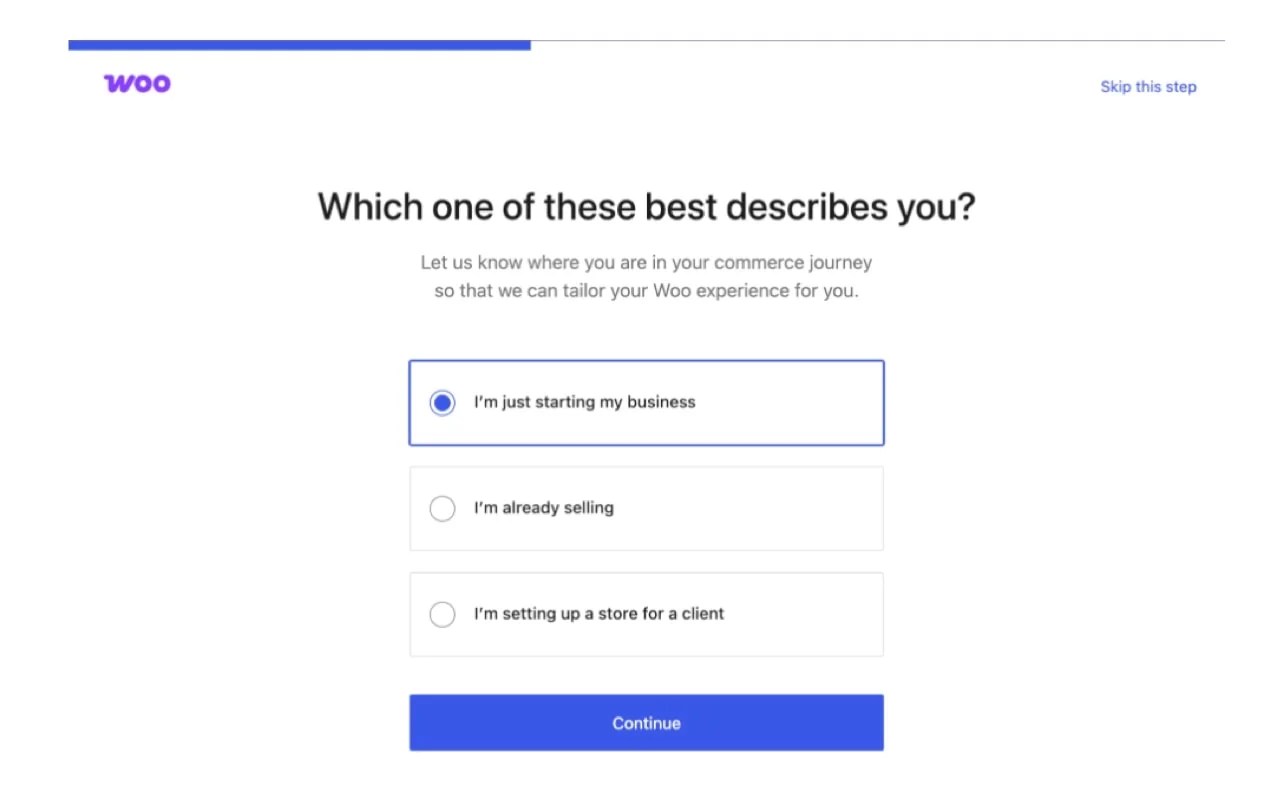
Choose a theme
A WordPress theme is the basis for the design and layout of your site. There are hundreds of free and paid options, so you’re sure to find the perfect fit for your online business.
Here are some questions to ask about the themes you’re considering:
- Is it mobile responsive? Check the theme demo and ensure that it looks great on desktops, tablets, and mobile phones. This is critical both for your site visitors and for search engines.
- Does it integrate seamlessly with WooCommerce? Most themes are ecommerce-ready, but double check to ensure they’ll offer a great experience.
- Does it provide the level of flexibility you need? Some themes are more plug-and-play, allowing you to just switch out the content and have a ready-made site. This is an excellent option for beginners, but may not allow for as much customization. Others work as a blank slate — these can have a bit of a learning curve, but allow for endless design styles.
- Can you edit it easily? If you’re not a developer, avoid themes that require coding to make them look the way you want. Instead, choose one that relies upon the block editor, which is a website builder that allows for drag-and-drop content creation. Some even include demos that you can import as a starting point.
- Does it include support? Make sure that your theme includes support in case you run into any issues. Free themes typically include a support forum, while premium themes often have a ticketing system. If you choose a free theme, visit the forum to see how regularly the developer responds and how helpful they are.
- Is it updated regularly? Look for a theme that’s updated to meet the latest WordPress requirements. This is important for both functionality and security.
For more considerations, read this post about how to choose a theme.
Not sure where to begin? The Twenty Twenty-Five theme is a great starting point for stores or websites of any kind.
But there are also themes designed around specific purposes. For example, the Hotel theme is great for accommodations, the Bistro theme has features perfect for food shops, and Artisan was created with handcrafted products in mind.
Check out the WooCommerce theme library or the WordPress.org theme directory for even more options.
Choose a payment gateway
A payment gateway securely processes credit card, digital wallet, and even crypto payments (depending on the gateway you choose) and transfers the money to your bank account. You may have heard of PayPal or Stripe, two common options. WooCommerce integrates with more than a dozen payment gateways, so the setup process is seamless.
When choosing one, ask these questions:
- What fees do they charge? Are they per payment or per month?
- How easy do they make the checkout process for customers?
- Do they keep customers on your site or redirect to their own platform?
- Do they accept international currencies?
- Do they accept the payment methods (cards, digital wallets, crypto, etc.) your customers prefer?
- Do they allow for recurring payments?
- Do they integrate with payment plan solutions?
- How quickly can you access the money you earn?
- How do they handle payment disputes?
Consider the specific needs of your business. If you sell subscriptions, you’ll need a gateway that accepts recurring payments, but if you only need to take one-time payments, that won’t be necessary.
One great option is WooPayments, a free extension that enables you to manage payments, refunds, and more from the same dashboard that you manage the other parts of your store. Plus, WooPayments:
- Supports digital wallets like Apple Pay and Google Pay
- Is available in 38 countries and accepts more than 135 currencies
- Allows you to accept contactless, in-person payments with Tap to Pay
- Lets customers save payment methods on your site
- Offers buy now, pay later options for customers
- Supports recurring payments
Ultimately, this means a smoother process for your customers, more conversions, and easier management for you and your team.
Learn more about choosing the right payment gateway.
Set up taxes
Depending on your local regulations, you may need to charge sales tax. While you can define your own tax rates using WooCommerce default settings, an extension like WooCommerce Tax automatically determines the correct sales tax based on the city, state, and country you ship to. Plus, it’s free to set up.
Remember, you may want to work with a professional to determine the right setup for your specific situation and verify legal compliance.
Extend your store
The WooCommerce Marketplace has hundreds of free and premium extensions that offer additional functionality for your online store. Here are just a few things you can do with extensions:
- Add new product types, like subscriptions, memberships, courses, and bookings.
- Accept deposits, pre-orders, or payment plans.
- Customize your product or checkout pages.
- Set up email marketing and connect to social media accounts.
- Create advertising campaigns on Google, Facebook, and more.
- Accept payments in person, like at flea markets, festivals, and pop-up stores.
- Sell gift cards or bundled items, and create product videos.
- Improve your website speed.
There are endless options that fit your business model! And each extension includes detailed documentation and unrivaled support, so you’ll never find yourself wondering what to do next.
Build website content
Now it’s time to build the content of your site — the information you’ll use to sell your products and bring back customers time and time again.
Create pages
Pages contain the key content of your website — information about you, your store, and your policies. While your exact content will differ based on your products, mission, and target market, there are a few pages that every website needs:
- A homepage summarizing your company and offerings
- An about page with information about your business, mission, and history
- A contact page to help customers get in touch
- An FAQ page with answers to common questions
- A privacy policy page for details about how you handle customer data
To create a page, go to Pages → Add New Page in your WordPress dashboard.
Then, use the WordPress block editor to add text, images, videos, buttons, and more to your pages. You can access a list of available blocks by clicking the blue + icon at the top left-hand corner.

There, you can scroll through the block library to find the element you’re looking for or search for something specific. You can also use block patterns to create beautiful, ready-to-go sections (e.g. a pricing table, FAQs section, or product grid).
You can customize each block by selecting the one you want to edit, then clicking the Settings button at the top right corner. A panel will slide out with simple settings that vary based on the type of block you selected.
For example, for a Paragraph block, you can edit the text and background color, typography size, margins, letter spacing, font, and more. And for a Gallery block, you can edit the number of columns, image resolution, links, crop settings, order of appearance, colors, and spacing.

While the block editor gives you a good idea of how your page looks, you can also click the View icon at the top right to preview it on different devices before publishing. When you’re happy, simply click the blue Publish button and your page is live!
Want to dive in further? See the full documentation for step-by-step details on creating pages.
Want even more customization? Read all about how to customize your Checkout page.
Create products
Unlike pages, products aren’t created with the block editor. Instead, they contain specific options for selling online: prices, inventory levels, sizes, categories, etc. You can add products to pages using blocks in order to display them to customers.

There are several product types you can set up, including:
- Simple products: Straightforward items with no options, like a book
- Variable products: Items with options that customers can choose from, like a T-shirt with multiple sizes and colors
- Virtual products: Items that aren’t physical — sell digital products like ebooks and products like services and consultations
- Downloadable products: Virtual products that customers can download, like ebooks, templates, and music files
- Subscriptions: Products that customers can order on a recurring basis, like subscription boxes or maintenance plans (Note: This product type requires the Woo Subscriptions extension.)
- Memberships: Listings that provide access to members-only content, discounts, products, and more (Note: This product type requires the WooCommerce Memberships extension.)
- Bookings: Reservations for specific dates and times, such as hotel accommodations or jet ski rentals (Note: This product type requires the WooCommerce Bookings extension.)
- Affiliate products: Products that earn you a commission each time someone purchases one on an external site. You can promote affiliate products by listing them alongside other items on your store.
With a simple product, for example, you can add information like the product title, description, price, sales price, inventory level, and shipping weights. You can also add a primary image and gallery images, and set related products to recommend to shoppers.
The best part? There’s no code required at all! Read our documentation for all the details of creating products.
If you sell services rather than physical products, the setup process is very similar. Learn more about selling services with WooCommerce.
Want a professional to take care of all this for you? The Woo Agency Partners directory is full of vetted agencies ready to help! You can filter them based on time zone, budget, and more to find the perfect web design services for your needs.
5. Determine how to ship products and fulfill orders
Once your online business is almost ready to go, your next step is to determine how you’re going to manage and ship products.
Here are some things to consider:
Inventory management
How do you want to store products? If you won’t have a brick-and-mortar business, you’ll need some other way to handle this. Here are a few options:
- Self-storage. Store products at your home or place of business. This is great for new or small online businesses but, of course, can get overwhelming as you grow. You probably don’t have space for hundreds of items in your garage!
- Traditional warehousing. Store products in a dedicated space like a warehouse or storage unit. This gives you more space and control, but is more expensive than self-storage.
- Dropshipping. Store products with a third party, who will also manufacture and ship them to customers. A dropshipping business is an affordable solution, but you lose a lot of control over product quality, delivery speed, and packaging. See the pros and cons of dropshipping.
- Print on demand. You send your designs to a third party, who prints them on products like T-shirts, mugs, and stickers as customers order them. This can be a very affordable and easy way for artists and designers to start an online business. But, again, you lose some level of control. Learn more about print on demand.
With this decision made, take the time to set up an inventory management system so that you never sell an item that isn’t in stock. That may involve simply staying on top of the inventory that’s listed online or syncing your warehouse with your online store so everything’s always up-to-date. This is especially important if you also sell in person or other online marketplaces. Here are a few tips for improving your inventory management.
Shipping
If you sell physical products, you need to get them to customers safely, quickly, and affordably. You can set fixed prices, offer free shipping, or charge based on factors like weight, size, distance, and delivery speed. You can even automatically pull in live, updated rates from common carriers like USPS, UPS, and Fedex.
To create your ideal shipping setup, follow these three steps:
- Get to know shipping methods and fulfillment options.
- Decide on a shipping strategy.
- Implement your shipping strategy using WooCommerce and any required shipping extensions.
This is also going to be very particular to your online business and target market. However, almost any store can benefit from the WooCommerce Shipping extension, which simplifies the entire process.
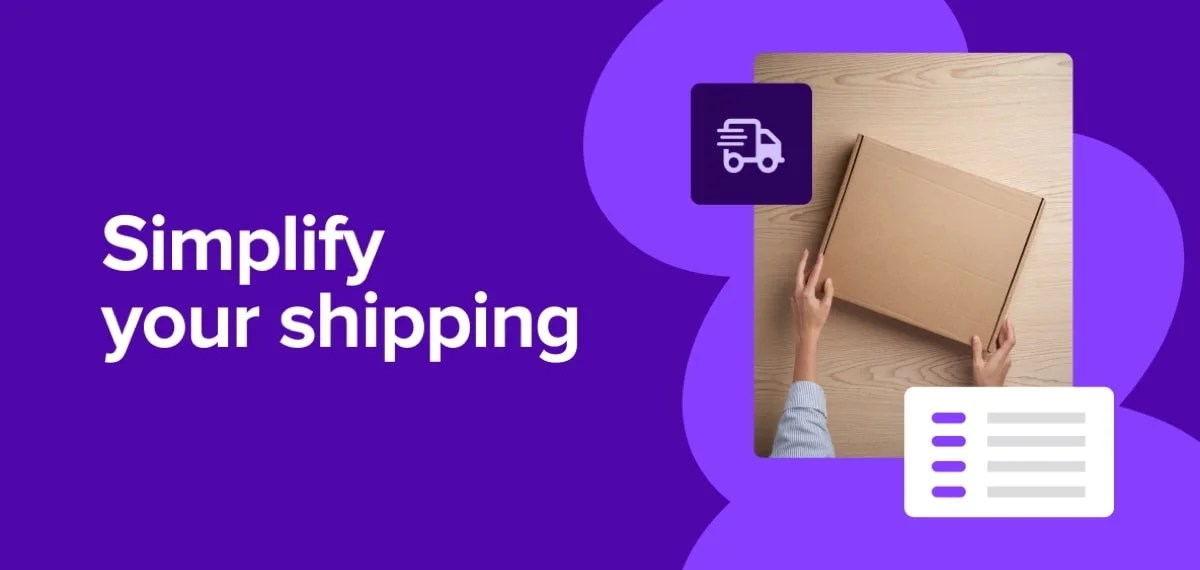
It enables you to print shipping labels directly from the WooCommerce dashboard, and even secures you hefty discounts from USPS and DHL.
After you get your shipping details figured out, spend some time considering your packaging. If you sell breakable items, make sure they’re protected during the shipping process.
If you sell perishable items, pack them with dry ice or ship using refrigerated trucks. Packaging is also an opportunity to delight your customers — consider branded boxes, thank you notes, and fun surprises.
6. Market your products
You’re almost ready to officially start your small business online! It’s time to get your products and business name in front of potential customers. There are lots of effective marketing strategies and methods — from social media marketing and influencer marketing to paid advertising — and it’ll take some trial and error to find the right combination for your products and target audience.
Here are a few common (and effective!) options:
- Search engine optimization (SEO): Show up on search engines (think: Google) when someone looks for your products or searches for related words.
- Paid search: Pay for visibility on search engines when someone looks for terms related to what you sell online. The Google for WooCommerce extension helps connect your store directly to Google, so you can automatically sync information to ads and product listings.
- Content marketing: Create written and visual content that educates your target audience, attracts them to your site, or convinces them to make a purchase. Blogs are great for this, and WordPress websites are great for publishing blog posts! This helps across a variety of marketing strategies, including search engine optimization and social media marketing.
- Social media marketing: Share blog posts, tips, and recommendations with followers on social media accounts like TikTok or Instagram, or pay to reach them. You can also use influencer marketing to harness the power of popular social media figures.
- Email marketing: Follow up with existing or potential customers, share discounts and offers, and recover abandoned carts. The Klaviyo for WooCommerce marketing automation extension enables you to do all of this in one place.
Finding the right marketing strategy to grow a successful business can take time and experimentation, so don’t get frustrated if you don’t see positive results right away! Focus on reaching your target market with relevant, useful content and you’ll make an impression that will lead to sales.
Start selling online
↑ Back to topAs an online store owner, you can do what you love, solve customer problems, and connect with people who love the same things as you, all while building a successful business. And starting a successful online business doesn’t have to be complicated — WooCommerce provides all the tools and information you need to start selling online and reach new customers.
Get started with WooCommerce or get to know fellow store owners at a meetup near you.
About







